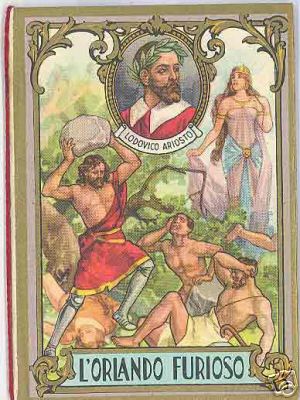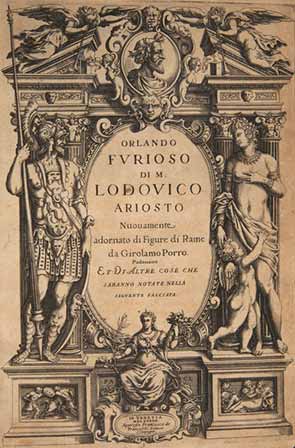

Warning: template has been deprecated.- Excerpted from Orlando Furioso on Wikipedia, the free encyclopedia. A sequel of Bioardo’s Orlando Innamorato, Ariosto’s Orlando Furioso is an epic-chivalrous poem edited between 15. William Stewart Rose produced an eight volume translation beginning publication in 1823 and ending in 1831. There have been several verse translations of Orlando Furioso into English. This tense situation causes Count Orlando to go comprehensively mad-'furioso.' No matter. If this seems a bad idea, she also loathes men. However, Ariosto has little concern for historical or geographical accuracy, and the poem wanders at will from Japan to the Hebrides, as well as including many fantastical and magical elements, such as a trip to the moon and an array of fantastical creatures including a gigantic sea monster called the orc and the hippogriff. The central story is of a crusading knight, Count Orlando, who falls in love with a girl who is (a) a pagan, (b) a sorceress. The action takes place against the background of the war between Charlemagne and his Christian paladins, and the Saracen army which is attempting to invade Europe. The earliest version appeared in 1516, although the poem was not published in its complete form until 1532. Slavitt’s translation captures the energy, comedy, and great fun of Ariosto’s Italian.Orlando furioso ( The Frenzy of Orlando, more literally Mad Orlando in Italian furioso is seldom capitalized) is an Italian romantic epic by Ludovico Ariosto which has exerted a wide influence on later culture. Characterized by satire, parody, and irony, the poem celebrates a new humanistic Renaissance conception of man in an utterly fantastical world. Orlando Furioso is Dante’s medieval universe turned upside down and made comic. The poem, however, obeys no geography or rules but its own, as the story moves by whim from Japan to the Hebrides to the moon it includes such imaginary creatures as the hippogriff and a sea monster called the orc. The action takes place against a besieged Paris, as Charlemagne and his Christian paladins defend the city against the Saracen king.


Now, through translations of generous selections from this longest of all major European poems, Slavitt brings the poem to life in ways previous translators have not.Īt the heart of Ariosto’s romance are Orlando’s unrequited love for the pagan princess Angelica and his jealous rage when she elopes. More recently, Italo Calvino drew inspiration from it. Voltaire called it the equal of the Iliad, the Odyssey, and Don Quixote combined. William Shakespeare borrowed one of its plots. It was a major influence on Spenser’s Faerie Queene. With this lively new verse translation, Slavitt introduces readers to Ariosto’s now neglected masterpiece-a poem whose impact on Western literature can scarcely be exaggerated. Slavitt’s translation of Orlando Furioso (“Mad Orlando”), one of the great literary achievements of the Italian Renaissance, is a publishing event.


 0 kommentar(er)
0 kommentar(er)
